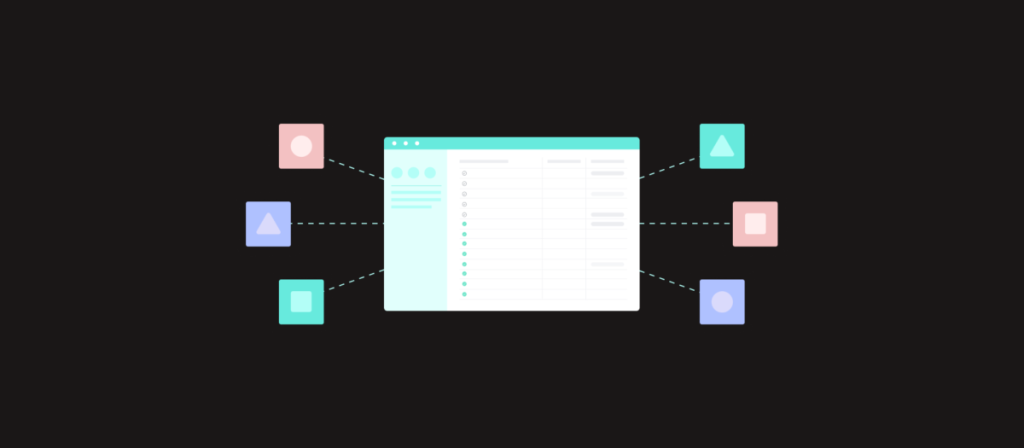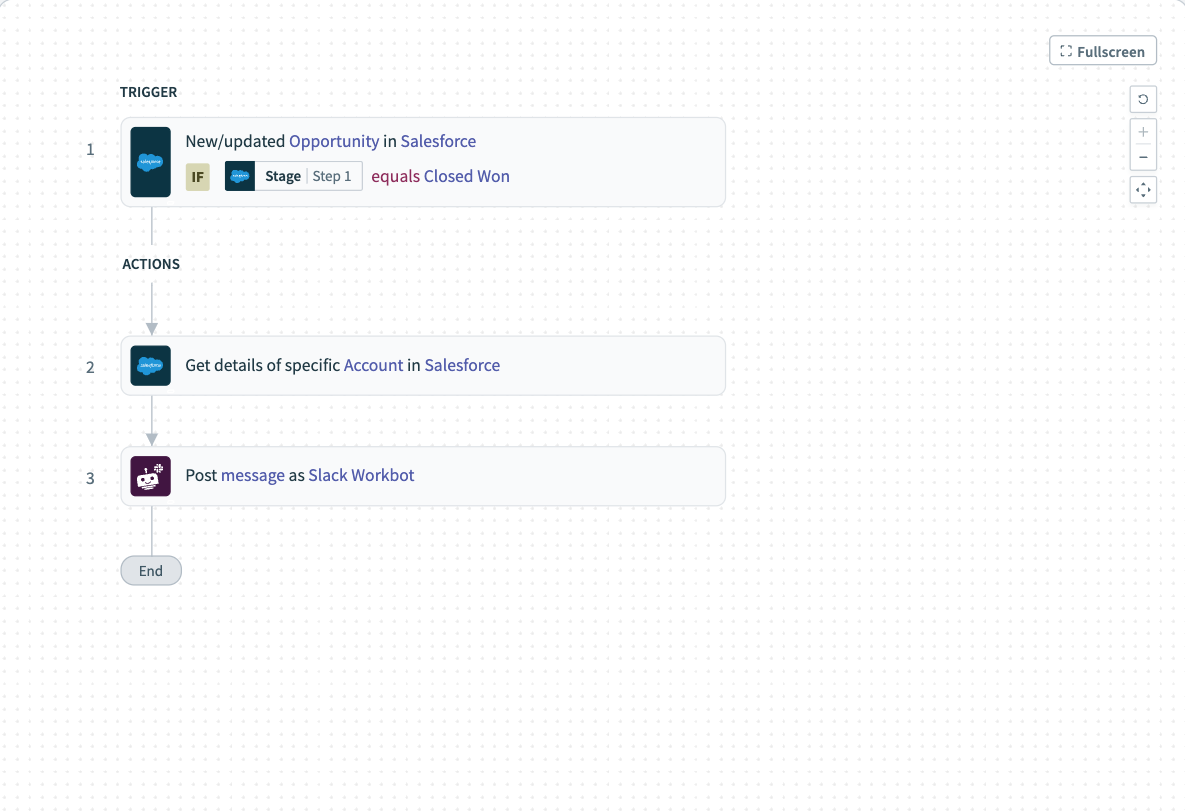Salesforce continues to be a leading customer relationship management (CRM) platform, and one reason is its ability to connect with other systems and apps.
Businesses can use Salesforce integrations, which help to streamline operations and improve customer relationships.
Yet for beginners, navigating the complexities of Salesforce integration can be daunting. Imagine spending hours moving data between Salesforce and other systems. Then, you find the data is incomplete or inaccurate.
Without guidance and a clear understanding of integration concepts, this can be frustrating. It can also lead to setbacks both for teams and revenue goals.
This post serves as a guide to Salesforce integration. It’ll give a simple and complete overview of the process, and cover concepts, types, and best practices.
What Is Salesforce?
Salesforce is a leading cloud-based CRM platform. It provides a comprehensive suite of applications and services designed to help businesses of all sizes manage their sales, marketing, customer service, and other business operations more effectively.
What Is Salesforce Integration?
Salesforce integration is the process of connecting Salesforce with other systems, data sources, or applications. This integration allows you to extend functionality, share data, and automate business workflows. As a result, you create a unified and consistent view of customer data across departments and platforms.
Some common examples of Salesforce integration are
- enterprise resource planning (ERP) systems (e.g., SAP, Oracle, Microsoft Dynamics);
- e-commerce platforms (e.g., Shopify, Magento, WooCommerce);
- financial and accounting systems (e.g., QuickBooks, Xero, NetSuite);
- human resource management systems (HRMS) (e.g., Workday, BambooHR); and
- social media platforms (e.g., X, Facebook, LinkedIn).
Why Is Salesforce Integration Important?
There are several benefits to organizations integrating Salesforce with other systems.
- Data sharing—Salesforce can connect with other systems. This allows data to flow in both directions. It ensures that customer information, sales data, and other relevant data are synced. They sync across different apps and teams.
- Workflow automation—When you integrate Salesforce with other business applications, you can automate processes that span multiple systems. For example, connecting Salesforce with an accounting system can automate billing and invoicing.
- Unified customer view—Consolidating data from various sources into Salesforce lets you fully view your customers’ data. This view includes interactions, purchase history, and preferences. It helps with better customer service and targeted marketing.
- Increased productivity—Salesforce integration can boost productivity. It does this by cutting manual data entry and the errors in copying data across systems.
- Enhanced reporting and analytics—By combining data from many sources in Salesforce, organizations can use Salesforce for reporting and analytics. This allows them to gain deeper insights into their business operations, customer behavior, and sales performance.

Types of Salesforce Integration
Salesforce integrations come in different forms, each accountable for a unique need and allowing joint data access and process automation between Salesforce and the rest of the systems/applications. Below are some common types of Salesforce integrations.
Data Integration
This type of integration involves syncing data between Salesforce and other systems. These systems include enterprise resource planning (ERP), marketing automation, and e-commerce platforms. By combining data, apps keep customer info, sales data, and other relevant data.
Business Process Integration
This integration type automates business processes involving many systems and departments. For instance, connecting Salesforce with an accounting system can automate billing and invoicing, making operations smoother and reducing manual work.
Virtualization Integration
These integration patterns allow users to view, search, and modify data in external systems. When implementing these types of integrations, the initiating app must reach out to others and interact with their data in real time.
This approach removes the need for data replication across many systems and ensures that users constantly interact with the most up-to-date data.
What Are the Methods of Integration in Salesforce?
Several methods and approaches exist to integrate Salesforce with other systems and applications. Here are some standard methods of integration in Salesforce.
Salesforce APIs
Salesforce has a collection of APIs capable of connecting to the Salesforce platform programmatically. These include:
- REST API—drives integration via RESTful web services
- SOAP API—enables you to tap into Salesforce’s extensive SOAP (simple object access protocol) features through web services
- bulk API—facilitates loading and extracting data in bulk
- metadata API—enables programmatic access to Salesforce metadata customization and migrations
- streaming API—enables the real-time transmission of events and data changes as they occur
Apex Code and Visualforce
Apex Code and Visualforce are Salesforce’s native frameworks for custom integrations or extending Salesforce’s features. Developers can create custom Apex classes, triggers, and Visualforce pages that will enable interaction with external systems.
Pre-Built Integrations
Salesforce provides a wide variety of pre-built integrations and connectors for well-known apps and services through the AppExchange Marketplace. Such integrations reduce the complexity and require less coding.
External Objects
Salesforce has external objects that allow you to access data stored in external systems and make it appear as if it’s stored natively in Salesforce. This approach can help integrate with databases or legacy systems.
Workflow and Process Automation
The Salesforce platform offers Workflow Rules, Process Builder, and Flow Designer to help you automate your business processes and integrate with your external systems using outbound messaging or callouts.
Third-Party Integration Tools
Aside from Salesforce’s native integration capabilities, various third-party tools and frameworks such as Workato act as a bridge between Salesforce and other applications, ensuring smooth data flow and workflow automation.

A Salesforce Integration Example Using Workato
Let’s look at an overview of how you can leverage Workato’s recipes for your Salesforce integration.
This recipe will send a message to your Slack channel when there’s an opportunity created or updated in Salesforce.
A recipe is an automated workflow that has a trigger and action(s). Before creating or using preexisting recipes, log in to your Workato sandbox and connect Salesforce and Slack to Workato. You can do this in the recipe editor or the connection wizard. Find out more here.
Once connected, use this example recipe.
The nature of this recipe is based on a created or updated opportunity. In the trigger section, you select the Salesforce object (opportunity), time, and the trigger condition. The time indicates the period for fetching triggers, and this recipe is configured for one month. The condition is for a closed/won opportunity.
Next are the two actions, with the first fetching details of the Salesforce account and the second posting a notification message to the Slack channel.
Finally, you have an end button that terminates the workflow.
Common Challenges and Solutions to Salesforce Integration
Integrating Salesforce into other systems and applications is not without its challenges. Here are some common challenges and potential solutions.
Data Mapping and Transformation
Different systems can use various data formats, structures, and naming conventions, therefore complicating data mapping and transformation. To counter this challenge, use data-mapping tools or middleware. They can process data changes and provide maps between systems. Also, consider normalizing the data models and conventions throughout the organization.
Data Quality and Consistency
Maintaining data quality and consistency during data integration is difficult, as data may be added or updated from many places. That’s why you need to use Salesforce data management tools. Examples include Data Loaders and Import Wizards, which help maintain data accuracy during integration. Also, create data validation rules and cleansing processes to make the data of high quality and consistent.
Real-Time Integration and Event-Handling
Some integration scenarios may be so complex that they’ll need real-time data synchronization or event-driven architecture to respond to changes or triggers coming from different systems. Here, you can use Salesforce’s Streaming API or Platform Events. For real-time data exchange and event-handling, you can also use event-driven integration platforms like Apache Kafka or Amazon Kinesis.
Authentication and Security
Integrations often pose the challenge of transmitting secure data and implementing secure authentication and authorization procedures. Use OAuth 2.0 for authentication, and follow Salesforce’s recommended security guidelines. Also, use Salesforce’s permission sets and profiles to ensure access and manage user permissions.
Performance and Scalability
Lots of data or complex integrations may hurt performance or scalability. Improve the integration process by batching operations. Use Salesforce’s bulk API for large data transfers. Also, use caching and load balancing. You can also consider making the process asynchronous or queued for resource-intensive operations.
Monitoring and Error-Handling
Monitoring and fixing integration issues can be challenging, especially when many systems are involved. Set up a complete monitoring and logging system in Salesforce and third-party systems. Use Salesforce’s monitoring tools, including Apex Logging and Debug Logs, to find and fix integration problems. Have error-handling and retrying procedures to achieve reliable data exchange.
Salesforce Integration Best Practices
To ensure successful integration, consider the following best practices:
- Implement data validation rules and processes to ensure data accuracy and consistency.
- Follow Salesforce’s security guidelines, such as field-level security and object-level permissions.
- Leverage Salesforce’s automation tools, such as Workflow Rules, Process Builder, and Flow, to streamline business processes and improve efficiency.
- Ensure data consistency and integrity across integrated systems by implementing robust error-handling and monitoring mechanisms.
- Use Salesforce’s reporting and analytics capabilities, such as standard reports, custom report types, and Einstein Analytics, to gain insights from your data.
- Invest in comprehensive user training and change management to ensure the successful adoption of Salesforce within your organization.
- Leverage Workato’s automation capabilities to automate workflows and processes across multiple systems, reducing manual effort and increasing efficiency.
Unleash the Power of Salesforce Integration With Workato
By leveraging Salesforce’s powerful integrations and Workato recipes, you can unlock a world of possibilities, streamline processes, enhance customer experiences, and drive growth. Get started today using Workato, a leading integration as a service platform.
This post was written by Mercy Kibet. Mercy is a full-stack developer with a knack for learning and writing about new and intriguing tech stacks.

